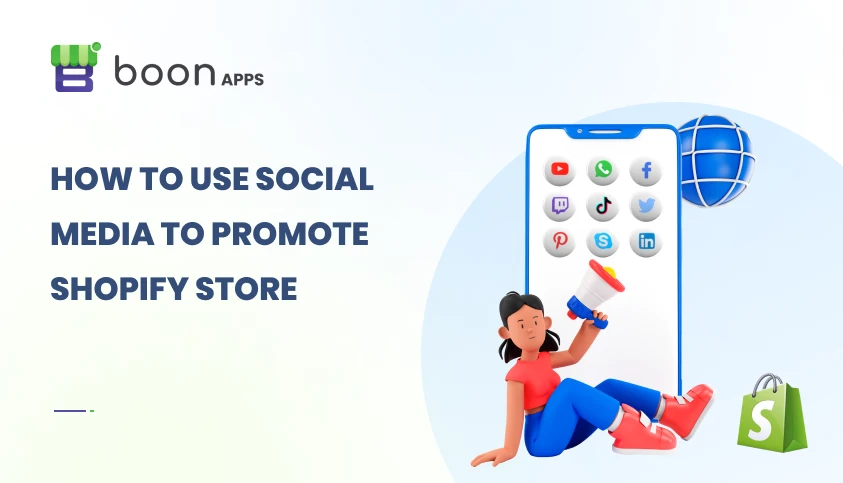MINDFULNESS-
Activating Hope, Truth, and Better Conversations.
Three practices to lead us out of the malaise and redefine our conversations.
Reviewed by Ekua Hagan
KEY POINTS-
People can shift how they observe the onslaught of misinformation and mistruths by adopting an insightful bird’s-eye view, or meta-perspective.
Society's reliance on science, facts, and expertise is critically important.
Shifting from conflict avoidance to the art of dialogue rebuilds conversational skills and allows for more respectful conversations.
Over the last six years, whenever conversations with friends and family moved into politics, the mood quickly spiraled into frustration and hopelessness. The country’s political malaise has divided us and frozen us into inaction. And today, while the expelling of two black representatives out of the Tennessee congressional chamber is discouraging, it is also possible that the anti-woke mob so fearful of change is sparking awakened reactions.
I put my faith and hope in three practices that can lead us out of the malaise and powerfully shift our perspective so we can embrace the truth and redefine and refine our conversations.
First, we can shift the way we observe the onslaught of misinformation and mistruths. By understanding the greater evolutionary context from which humans emerged, we can adopt a mindset with a higher meta-perspective—a zooming-out, or an insightful bird’s-eye view.
The second practice is remembering how critically important our reliance on science, facts, and expertise is. Misinformation, ignorance, and nihilistic rhetoric erode public trust and confidence. Better conversations are not possible until we understand the valuable role facts, expertise, institutions, and public trust play; that is if our desire is to create sustainable democratic societies.
The third practice is rebuilding our conversational skills, shifting from conflict avoidance around difficult topics to the art of dialogue, where tolerance and open minds are the heart of collaborative and creative conversations, and wise decisions flow from those respectful conversations.
A Meta-Perspective
In the book Spiral Dynamics, Don Edward Beck and Christopher Cowan present a model of human development based on the theories of Clare W. Graves. Beck and Cowan discuss the evolution of our brains, systems, cultures, and behaviors. Their work provides a perspective of our ancestors’ revolutionary journey, a progressive march of human consciousness.
The complex and contentious evolutionary journey—from the cognitive revolution 70,000 years ago to the agricultural revolution about 11,000 years ago, to the scientific revolution 500 years ago, to our current biotechnical revolution—is marked by transformational progressions of conscious beings at the physical, psychological, cultural, societal, and governmental levels.
Each reformation birthed new ideas, morals, and social and governing systems, where ideas about right and wrong were forged, religious wars fought, and nations rose and fell. Each upward push of human consciousness created hostile, reactionary forces. Forces fearfully clinging to the known, rejecting the unknown, and sounding alarms of Armageddon: “Life will never be the same!”
Progress continued in the last century as liberal democracies evolved to promote citizen participation, including diverse racial, economic, religious, and ethnic groups. Within this brief time, much progress has been made (lots more to do) toward rejecting racism, embracing marriage equality, lifting voting restrictions, and, most recently, reconsidering gender stereotypes. As in the past, these reformations have set off strong adverse and fearful reactions.
A meta-perspective reminds us that life is a package deal. Biological, psychological, and sociological change, coupled with activism, are the engines of progress. And with progress comes resistance. Awakening to the upward march of progress and the danger of resistance informs the way we act. Accepting life’s complexity and pluralistic nature requires individuals, communities, and governments to take actions that enhance the arc of progress and to stay the course of building a better, more tolerant, and expansive future. The arc of history demonstrates that being awake is far superior to being asleep at the wheel.
Re-engaging Reality
Unscrupulous forces have hijacked the internet and social media platforms. They disregard facts, data, science, and expertise, making virtually every story, opinion, or pronouncement equally relevant. Podcasts, punditry, and conspiracy theories are no substitutes for trustworthy and knowledgeable expertise. When I was diagnosed with leukemia years ago, I wanted the best minds and most experienced docs by my side. There’s simply no excuse for rejecting expertise and experience.
While our understanding of the truth might vary, depending on our religion or spiritual beliefs, our shared democratic society relies on facts and common sense rooted in experience and documentable observations. Throughout history, when the truth and freedom of speech were eroded, societies and governments fell into the hands of chaotic authoritarianism.
What is a society without a solid foundation of factual information? On the surface, facts and truth may seem obvious, but when doubt is weaponized, our conversations have no solid ground to stand on. There’s no such thing as alternative facts. Ignorance and blind servitude are no excuse. We have an individual responsibility to educate ourselves. Current systems need to be improved to hold social media companies, cable news outlets, politicians, and institutions accountable. Perhaps, the dominion case against Fox News (entertainment) can lead the way.
Individuals, communities, and politicians must re-engage with reality and re-embrace science, expertise, and the authority of institutions. Trust is the foundation of democracy, and rebuilding it requires expertise, honesty, and reliability. It also requires each of us to make wise choices about what voices and opinions we listen to.
More Tolerant, Respectful Conversations
In contentious conversations, we accept our stories and opinions as the truth, fearfully clenching prejudices like racism, bigotry, and misogyny. This stance creates immovable conversations. With our hearts and minds closed, we become prey to untruths and conspiracies—a pattern of protecting rather than questioning our attachment to our beliefs.
David Bohm, a theoretical physicist and philosopher of the mind who is intensely interested in the unfolding of society, developed a process called the Bohm Dialogue. His dialogue offers a radical guide for transforming confrontational and adversarial debates into conversations of deconstruction and synthesis.
Bohm's process asks individuals to loosen the grip of their firmly held stories/opinions and deconstruct their roots, which consist of four archetypal: desires, concerns, power issues, and standards. Revealing and exploring these elements in conversation is the heart of collaboration. Any effort to deconstruct the hold our opinions have on us is like entering a conversation with a closed fist ready for battle fist vs. an open hand willing to be wrong, to have all the answers, and learn from others.
Desires
In conversations, our desires lurk in the background of our minds. We must be more aware of how desires shape our opinions and judgments. They can be a significant blind spot, locking us in unproductive conversations.
Concerns
In working with others and facing challenging issues, we all have concerns about what might happen. You may be worried about what might go wrong, or you might not want tomorrow to end like today. Our unconscious concerns are emotionally triggering and stressful.
Power Issues
In conversations, the question of authority is ubiquitous. Whether you’re a leader, colleague, teacher, parent, or friend, issues of power and control are always playing out, consciously and unconsciously.
Standards
Our standards play an outsized role in our conversations. Our opinions, judgments, preferences, and prejudices are driven by the standards, morals, and scruples we’ve consciously or unconsciously adopted through our families and culture of what is right or wrong, good or bad, pretty or ugly, wise or stupid.
In dialogue, as we share the thinking behind our opinions without others critiquing, a space for listening opens up. As we absorb other perspectives, our minds and hearts can change through synthesis. And as ideas are shared and compared, collaboration shifts into creativity. In a creative conversation, fresh, previously spoken ideas and solutions bubble up, as if by magic.
All three practices ask a lot of us. These are not easy tasks, but given the current situation, we have no choice but to muster up the energy to keep marching forward.
With the upcoming 2024 election heating up and fearful anti-change reactions on full display, we can all affect the outcome by aligning our actions with the evolutionary march upward. We can also hold politicians, social media platforms, and the press accountable by insisting on facts, trusting expertise, and practicing collaborative and creative conversations.
MINDFULNESS-
Activating Hope, Truth, and Better Conversations.
Three practices to lead us out of the malaise and redefine our conversations.
Reviewed by Ekua Hagan
KEY POINTS-
People can shift how they observe the onslaught of misinformation and mistruths by adopting an insightful bird’s-eye view, or meta-perspective.
Society's reliance on science, facts, and expertise is critically important.
Shifting from conflict avoidance to the art of dialogue rebuilds conversational skills and allows for more respectful conversations.
Over the last six years, whenever conversations with friends and family moved into politics, the mood quickly spiraled into frustration and hopelessness. The country’s political malaise has divided us and frozen us into inaction. And today, while the expelling of two black representatives out of the Tennessee congressional chamber is discouraging, it is also possible that the anti-woke mob so fearful of change is sparking awakened reactions.
I put my faith and hope in three practices that can lead us out of the malaise and powerfully shift our perspective so we can embrace the truth and redefine and refine our conversations.
First, we can shift the way we observe the onslaught of misinformation and mistruths. By understanding the greater evolutionary context from which humans emerged, we can adopt a mindset with a higher meta-perspective—a zooming-out, or an insightful bird’s-eye view.
The second practice is remembering how critically important our reliance on science, facts, and expertise is. Misinformation, ignorance, and nihilistic rhetoric erode public trust and confidence. Better conversations are not possible until we understand the valuable role facts, expertise, institutions, and public trust play; that is if our desire is to create sustainable democratic societies.
The third practice is rebuilding our conversational skills, shifting from conflict avoidance around difficult topics to the art of dialogue, where tolerance and open minds are the heart of collaborative and creative conversations, and wise decisions flow from those respectful conversations.
A Meta-Perspective
In the book Spiral Dynamics, Don Edward Beck and Christopher Cowan present a model of human development based on the theories of Clare W. Graves. Beck and Cowan discuss the evolution of our brains, systems, cultures, and behaviors. Their work provides a perspective of our ancestors’ revolutionary journey, a progressive march of human consciousness.
The complex and contentious evolutionary journey—from the cognitive revolution 70,000 years ago to the agricultural revolution about 11,000 years ago, to the scientific revolution 500 years ago, to our current biotechnical revolution—is marked by transformational progressions of conscious beings at the physical, psychological, cultural, societal, and governmental levels.
Each reformation birthed new ideas, morals, and social and governing systems, where ideas about right and wrong were forged, religious wars fought, and nations rose and fell. Each upward push of human consciousness created hostile, reactionary forces. Forces fearfully clinging to the known, rejecting the unknown, and sounding alarms of Armageddon: “Life will never be the same!”
Progress continued in the last century as liberal democracies evolved to promote citizen participation, including diverse racial, economic, religious, and ethnic groups. Within this brief time, much progress has been made (lots more to do) toward rejecting racism, embracing marriage equality, lifting voting restrictions, and, most recently, reconsidering gender stereotypes. As in the past, these reformations have set off strong adverse and fearful reactions.
A meta-perspective reminds us that life is a package deal. Biological, psychological, and sociological change, coupled with activism, are the engines of progress. And with progress comes resistance. Awakening to the upward march of progress and the danger of resistance informs the way we act. Accepting life’s complexity and pluralistic nature requires individuals, communities, and governments to take actions that enhance the arc of progress and to stay the course of building a better, more tolerant, and expansive future. The arc of history demonstrates that being awake is far superior to being asleep at the wheel.
Re-engaging Reality
Unscrupulous forces have hijacked the internet and social media platforms. They disregard facts, data, science, and expertise, making virtually every story, opinion, or pronouncement equally relevant. Podcasts, punditry, and conspiracy theories are no substitutes for trustworthy and knowledgeable expertise. When I was diagnosed with leukemia years ago, I wanted the best minds and most experienced docs by my side. There’s simply no excuse for rejecting expertise and experience.
While our understanding of the truth might vary, depending on our religion or spiritual beliefs, our shared democratic society relies on facts and common sense rooted in experience and documentable observations. Throughout history, when the truth and freedom of speech were eroded, societies and governments fell into the hands of chaotic authoritarianism.
What is a society without a solid foundation of factual information? On the surface, facts and truth may seem obvious, but when doubt is weaponized, our conversations have no solid ground to stand on. There’s no such thing as alternative facts. Ignorance and blind servitude are no excuse. We have an individual responsibility to educate ourselves. Current systems need to be improved to hold social media companies, cable news outlets, politicians, and institutions accountable. Perhaps, the dominion case against Fox News (entertainment) can lead the way.
Individuals, communities, and politicians must re-engage with reality and re-embrace science, expertise, and the authority of institutions. Trust is the foundation of democracy, and rebuilding it requires expertise, honesty, and reliability. It also requires each of us to make wise choices about what voices and opinions we listen to.
More Tolerant, Respectful Conversations
In contentious conversations, we accept our stories and opinions as the truth, fearfully clenching prejudices like racism, bigotry, and misogyny. This stance creates immovable conversations. With our hearts and minds closed, we become prey to untruths and conspiracies—a pattern of protecting rather than questioning our attachment to our beliefs.
David Bohm, a theoretical physicist and philosopher of the mind who is intensely interested in the unfolding of society, developed a process called the Bohm Dialogue. His dialogue offers a radical guide for transforming confrontational and adversarial debates into conversations of deconstruction and synthesis.
Bohm's process asks individuals to loosen the grip of their firmly held stories/opinions and deconstruct their roots, which consist of four archetypal: desires, concerns, power issues, and standards. Revealing and exploring these elements in conversation is the heart of collaboration. Any effort to deconstruct the hold our opinions have on us is like entering a conversation with a closed fist ready for battle fist vs. an open hand willing to be wrong, to have all the answers, and learn from others.
Desires
In conversations, our desires lurk in the background of our minds. We must be more aware of how desires shape our opinions and judgments. They can be a significant blind spot, locking us in unproductive conversations.
Concerns
In working with others and facing challenging issues, we all have concerns about what might happen. You may be worried about what might go wrong, or you might not want tomorrow to end like today. Our unconscious concerns are emotionally triggering and stressful.
Power Issues
In conversations, the question of authority is ubiquitous. Whether you’re a leader, colleague, teacher, parent, or friend, issues of power and control are always playing out, consciously and unconsciously.
Standards
Our standards play an outsized role in our conversations. Our opinions, judgments, preferences, and prejudices are driven by the standards, morals, and scruples we’ve consciously or unconsciously adopted through our families and culture of what is right or wrong, good or bad, pretty or ugly, wise or stupid.
In dialogue, as we share the thinking behind our opinions without others critiquing, a space for listening opens up. As we absorb other perspectives, our minds and hearts can change through synthesis. And as ideas are shared and compared, collaboration shifts into creativity. In a creative conversation, fresh, previously spoken ideas and solutions bubble up, as if by magic.
All three practices ask a lot of us. These are not easy tasks, but given the current situation, we have no choice but to muster up the energy to keep marching forward.
With the upcoming 2024 election heating up and fearful anti-change reactions on full display, we can all affect the outcome by aligning our actions with the evolutionary march upward. We can also hold politicians, social media platforms, and the press accountable by insisting on facts, trusting expertise, and practicing collaborative and creative conversations.










